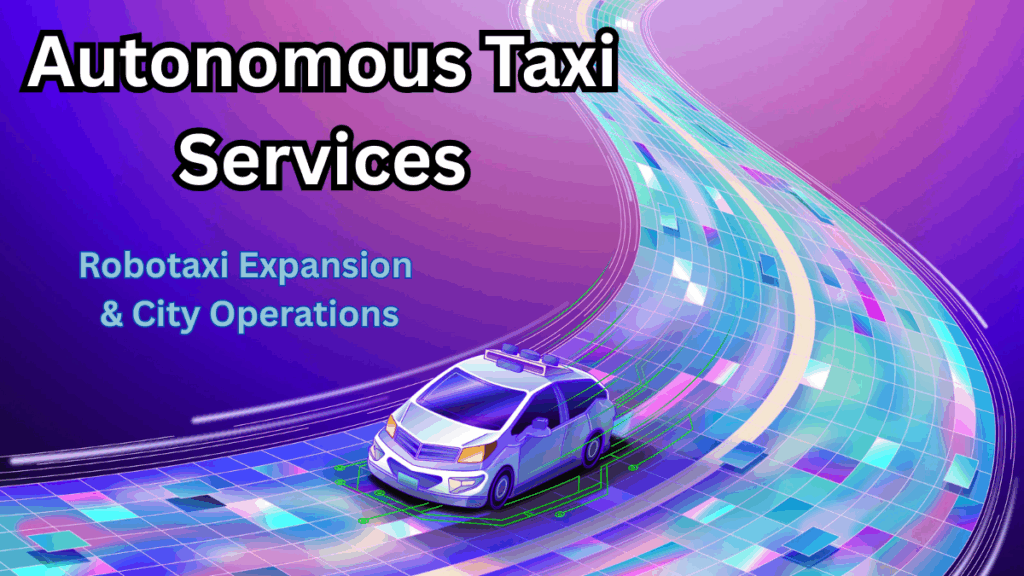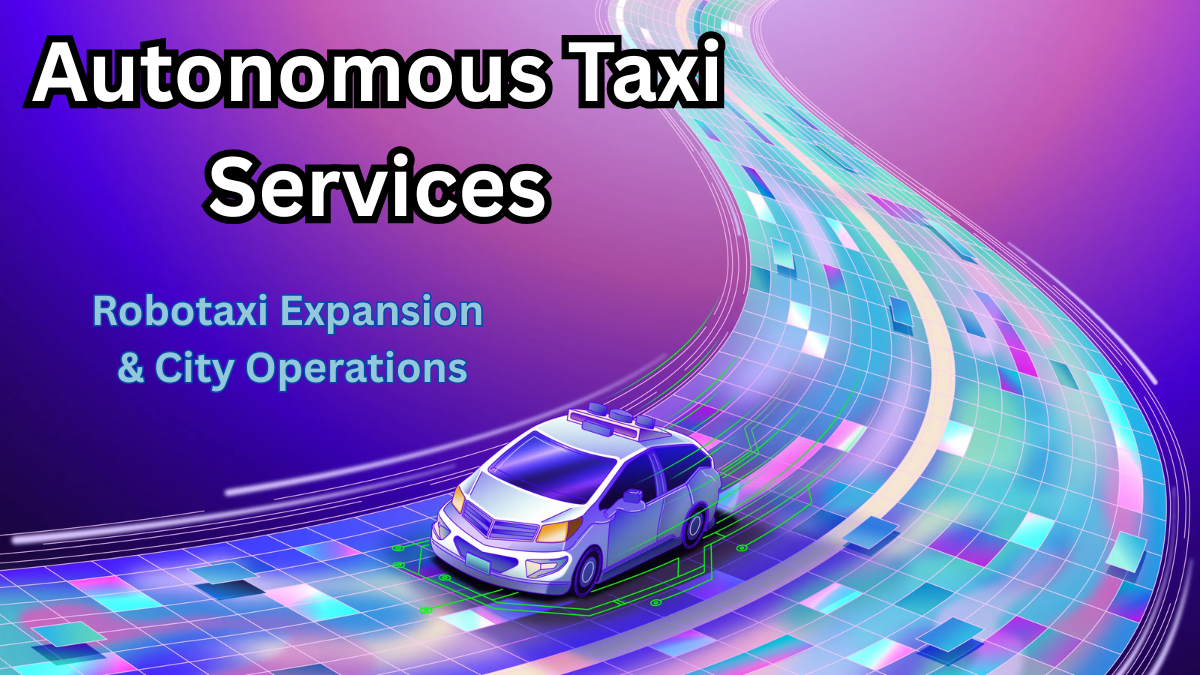Imagine stepping out of your home and being greeted by a sleek, driverless car ready to take you wherever you need to go. That’s not science fiction anymore — Autonomous Taxi Services 2025 is turning this vision into reality. With robotaxis gaining traction globally, urban mobility is on the brink of a major transformation.
Let’s explore how autonomous taxi services are expanding in 2025 and how cities are adapting to this technological leap.

The Rise of Robotaxis in 2025
Robotaxis are no longer experimental concepts confined to tech hubs. In 2025, they are becoming an everyday transport option in several major cities. Companies like Waymo, Cruise, Baidu, and Tesla are leading this wave.
Key features of modern robotaxi services
-
Fully driverless operation with advanced AI navigation
-
24/7 availability in select urban zones
-
Integration with city transport apps for seamless booking
-
Eco-friendly fleets focused on electric vehicles
Cities Embracing Autonomous Taxi Services
From San Francisco to Shanghai, Autonomous Taxi Services 2025 are reshaping urban landscapes. Here’s how some major cities are preparing:
| City | Robotaxi Operator(s) | Current Status (2025) |
|---|---|---|
| San Francisco | Waymo, Cruise | Full commercial deployment in core areas |
| Beijing | Baidu, Pony.ai | Licensed for limited passenger services |
| Dubai | Tesla, Cruise | Testing phase with pilot passengers |
| Munich | Mobileye, VW | Initial rollout in tech districts |
Regulations Supporting Robotaxi Growth
For robotaxis to thrive, cities and governments have stepped up with supportive frameworks.
Common regulatory initiatives include
-
Clear safety standards for autonomous operations
-
Data-sharing mandates between robotaxi operators and city planners
-
Designated pickup and drop-off zones to ease traffic
-
Insurance and liability policies specific to driverless vehicles
These measures ensure Autonomous Taxi Services 2025 balance innovation with public safety and urban efficiency.
What’s Next for Urban Mobility
Autonomous taxis are becoming a pillar of urban mobility. Here’s what we can expect by the end of 2025:
-
More cities approving commercial robotaxi operations
-
Improved vehicle-to-infrastructure communication for smoother rides
-
Integration with public transport passes and city payment apps
-
Expansion beyond city centers into suburban and rural areas
FAQs
Q1: Are robotaxis safe to use in 2025?
Yes. Most robotaxi fleets in 2025 undergo rigorous safety testing, follow strict regulatory guidelines, and use advanced sensors and AI to navigate city streets confidently.
Q2: How do I book an autonomous taxi in my city?
If Autonomous Taxi Services 2025 are operational in your city, you can usually book a ride through dedicated apps, public transport apps, or mobility platforms partnered with robotaxi services.
Q3: Are autonomous taxis affordable compared to regular cabs?
In many pilot cities, robotaxis are priced competitively — sometimes even cheaper than traditional cabs, especially during peak hours or in high-demand zones.
Q4: Which cities are expected to launch robotaxi services next?
Cities like London, Tokyo, and Los Angeles are actively testing autonomous taxis and may see wider rollouts by the end of 2025.
Click here to learn more
